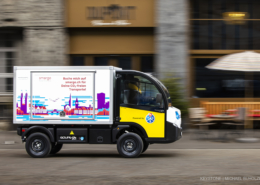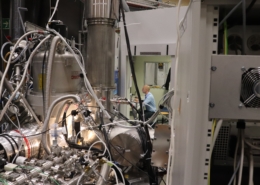MRI and medical scanners can also become more energy efficient
Medical imaging has become essential and a large number of MRIs and scanners are currently in use in Switzerland. Although these devices are of recognized utility for medical diagnosis, their impact in terms of electricity consumption is significant. However, technical progress has made it possible to reduce the power required when the system is stopped or on stand-by. The proper use of the different operating modes of MRIs and scanners therefore offers great potential for electricity savings. A detailed study of a scanner has even shown that the "energy saving" mode proposed by the manufacturer was even more economical than the manual night mode.
A study on the energy efficiency of medical equipment, in particular MRI and CT scanners, demonstrated the potential for electricity savings when replacing medical imaging equipment.
Electricity consumption was monitored for 12 MRIs and 11 scanners installed in both radiology institutes and hospitals. Several models, recent or old (commissioning from 2003 to 2020), from different manufacturers were concerned.
The observations made during the study show that, in general, the newer the device, the lower the power required for night mode. And since most of these appliances are used during the day, from Monday to Friday, the savings potential is significant.
The ProKilowatt Optispital program aims to encourage users to take energy savings into account when purchasing a new medical machine. A subsidy can be obtained at the time of replacement depending on the electricity savings achieved. Within the framework of this program, we have continued the analysis of MRIs and scanners and thus confirmed the conclusions of the first study mentioned above.
Study of the particular case of a scanner
We have monitored in 2021 a scanner recently commissioned in a radiology institute to replace an equivalent device from 2014. As expected, the consumption of the new device turned out to be much lower than that of the old one: almost 40% of electricity saving on average over the year, i.e. about 8000 kWh/year.
Following this first result, the supplier contacted us in order to evaluate the potential of additional electricity savings with the activation of the automatic "energy-saving" mode (in general, the appliances are put in night mode manually in the evening and for the weekend). This option automatically switches the device to night mode at the end of the day, and restarts it so that it is fully functional when the institute opens. In principle, the energy-saving mode should also be maintained throughout the weekend. A scanner needs a certain amount of time to start up again, and so, in order to ensure that it is fully functional from the first examination of the day, the start-up was initially programmed for 3 a.m.
The results of this test are very positive: the electrical power required to maintain the scanner in "energy saving" mode is about 500 W lower than in manual standby mode, i.e. a 40% reduction.
However, it turns out that the "energy saving" mode is active only during part of the night and is not activated on weekends (it is thus activated about 25 hours per week in total). In this configuration, the electricity consumption decreases by 7% compared to the use of the manual mode, which corresponds to more than 1,000 kWh/year.
After having noticed this anomaly thanks to the analysis of the monitoring data, the supplier was informed and adapted the settings as follows: start-up programmed this time at 6 am and maintenance of the "energy saving" mode during the weekend. As a result of this modification, the overall saving is 13% compared to the manual night mode, i.e. potentially almost 2,000 kWh/year. The reduction in consumption even reaches 28% for the night and weekend periods.
In summary:
- The renewal of the scanner allows a reduction in electricity consumption of almost 40%, i.e. more than 8,000 kWh/year,
- The use and optimal setting of the "energy-saving" mode brings an additional saving of 13%, i.e. nearly 2,000 kWh/year.
Advantages of using a recent model
Both the consumption monitoring in the first study and in the special case described above demonstrate the potential for energy savings when medical machines are renewed. For two comparable machines, with identical usage, the new one almost always has a lower consumption and requires less power in night mode.
Although electricity consumption is not generally a criterion for choosing a new machine, information on the potential for savings, with the implementation of good practices for manual use of the night mode or automatic programming, should be developed. Over the period of use, on average 10 years, the savings in operating costs can be substantial.
It should be noted that, with the exception of emergency services, most MRIs and scanners are used during the day, from Monday to Friday, which means that they are switched off two thirds of the time on average throughout the year. The power reduction required for night mode therefore offers significant potential for electricity savings.
Martine Felber and Jean-Loup Robineau, Planair SA, March 2022
 Shutterstock
Shutterstock
 Romande EnergieWenn aus dem Parkplatz ein Solarkraftwerk wird
Romande EnergieWenn aus dem Parkplatz ein Solarkraftwerk wird  Christian Dupraz Architecture OfficeEnergieeffizienz lohnt sich bei Schulgebäuden
Christian Dupraz Architecture OfficeEnergieeffizienz lohnt sich bei Schulgebäuden  KeystoneCHACOM-Oscar: Mehr Fahrt für geteilte Mobilität
KeystoneCHACOM-Oscar: Mehr Fahrt für geteilte Mobilität  Benedikt VogelComment la suie apparaît
Benedikt VogelComment la suie apparaît 
 Shutterstock
Shutterstock BFE Brigitte Mader
BFE Brigitte Mader
Neuste Kommentare